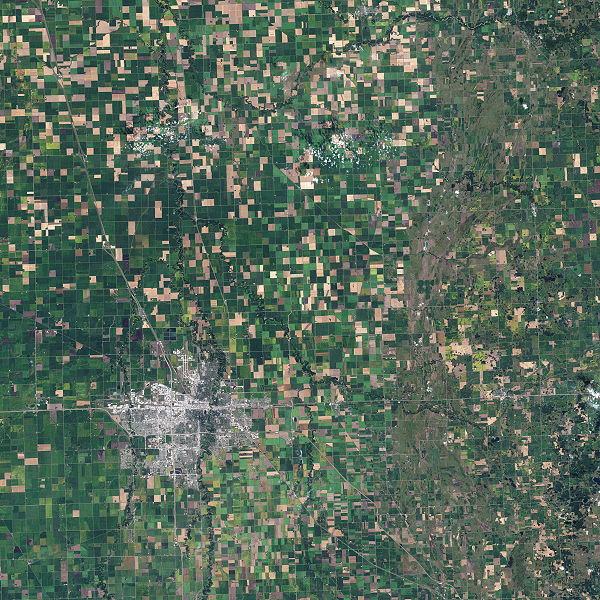In my chapter called “Agriculture Vs. Rewilding” I wrote about how agriculture is inherently destructive. I’ve lately come to revise this idea a bit. What inspired me to do this was looking at the origins of agriculture itself, and hearing from a few people that there are still agricultural people alive today who did not destroy their environments. Most of these people I would actually classify as horticulturalists, who practice some amount of agriculture, and not “full-blown” agriculturalists.
So… When is agriculture “sustainable”?
Agriculture was born in the flood plain. This is an important marker because when you practice agriculture in a flood plain, it is more “sustainable”. This is because you are working with the forces of nature, rather than against them. Every year the river floods and brings more nutrients from above. By working on a flood plain, you do not diminish the minerals and nutrients within a soil, because the soil of a river flood plain is in constant flux anyway. You don’t have to fertilize the soil, the flooding does that. Tilling doesn’t damage the soil because the river returns nutrients every year on its own. Flood plains are naturally regenerative.
The problem is not “agriculture”, so much as the problem is exporting agriculture from it’s sustainable (or regenerative) environment, the flood plain. Only when you export agriculture do you have to mimic the natural disturbance of a flood. On a flood plain, you are working with the natural flood cycle. Out of a flood plain, you have to create the flooding yourself. Some food for thought…
(for some context read the un-edited original post “Agriculture vs. Rewilding“)

6 responses to “Agriculture Revisited”
Hmm, I’d never really considered that… was a good little read 🙂
I should definitely find your book (somewhere in a box in my new house) and re-read it !
Hi Peter – I have a basic understanding of some different “sustainable” farming styles, such as master farmer: Masanobu Fukuoka’s “do nothing method,” and permaculture, and it seems to me that these styles of farming – through their focus on amplifying and feeding the Wild’s proclivity to be itself, instead of fighting and opposing it – like a surfer catching a good wave – and tending it toward growing food for humans and human pleasure are pretty sustainable (in the true sense of the word) forms of agriculture – increasing the fertility of the land each year. Also – in combo with fertilizing one’s garden religiously with humanure (http://humanurehandbook.com/), one could get a pretty fecund fecal free-for-all. Right? What do you think?
Hey Gabe,
Yeah, all of the “farming” methods are classified as “horticulture” in anthropological terms. And they are great! 🙂
Hey Peter –
This is very interesting. It reminds me of traditional silverweed/springbank clover/riceroot gardens of various Salish peoples. These plots would be at the mouth of rivers going out to the ocean, the tidal marshes. They were carefully tended and weeded, and were (as you said in your post) being constantly fertilized and flooded by the river and marine communities.
Good food for thought!
So what role do you think the use of non-primitive technologies have in turning agriculturally abused landscapes into horticultural plots? I’m thinking specifically of Sepp Holzer’s work using dozers to form gardens and waterways in the alps and open source ecology’s use of technology to decentralize the manufacturing of hi-tech tools for decentralized sustainable communities. It seems to me that technology for all its ills could be used in the right hands to rewild systems,mindsets, etc.
I don’t question your theory, but wanted to comment on it and see what your thoughts are, Peter. As you say, you are rethinking when agriculture is sustainable, and I wanted to throw this out there. I’m working on a farm that is on a flood plain, and we have benefited many years from the nutrient rich soil, the close water table and the absence of rocks. But we were devastated in a flood two years ago- and the flood plain theory did not serve us well there. Perhaps you are talking about flood plain agriculture with a longer timetable. From our view point here, 10 feet above the river, and two years later, our amazingly rich soil has been stripped and/or buried under feet of sand deposited by the river. Our soil fertility has had the dial turned way down on it, and we struggle to keep plants going in the sand that is nutrient deficient and won’t hold water. If anything, our operation, which once required little fertilizing and little irrigation, has become more labor and resource intensive- a much more unsustainable operation. I understand that this is the very process that created the incredible land we have been working on. But with climate change creating more flooding in our area, and the river sitting only a couple feet below our banks for the last couple weeks due to the ridiculous amounts of rain we’ve been getting, our future as farmers here is questionable. Not just because we can lose all our crops, but because of what the river leaves behind for us to work with. More and more, folks turn their eyes to the hills, and being a flatland farmer doesn’t appear to be an enviable quality anymore, as weather becomes more unpredictable. What used to qualify, perhaps, in your eyes as a more sustainable operation, has become so much less so, due to our flood plain, and yes, our short term view point as humans trying to feed each other.
Whaddya say?